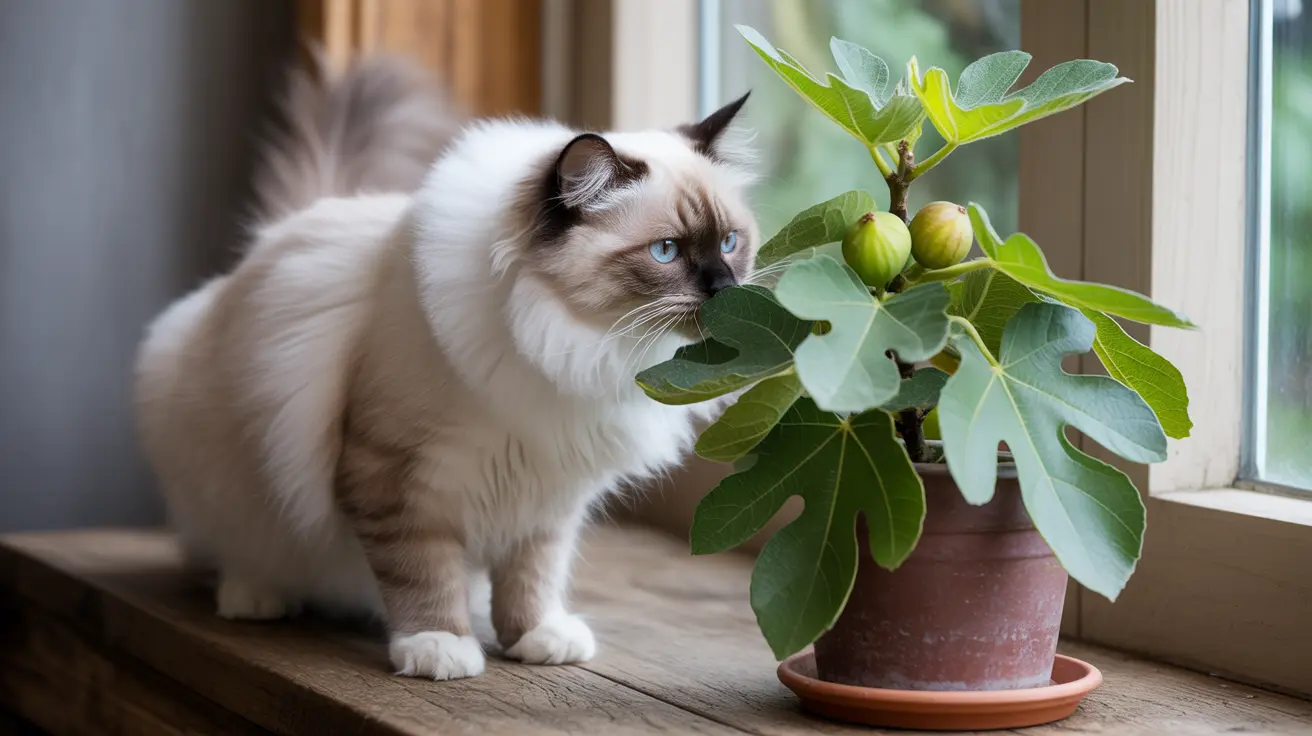As cat owners, we're always curious about what foods are safe for our feline friends. When it comes to figs, the answer requires careful consideration. Whether you're growing fig plants at home or wondering if your cat can share in this sweet fruit, it's crucial to understand the potential risks and health implications for your pet.
In this comprehensive guide, we'll explore why figs and fig plants pose significant risks to cats, what symptoms to watch for if your cat encounters figs, and how to keep your feline companion safe from these potentially harmful plants and fruits.
Understanding Fig Toxicity in Cats
All parts of the fig plant contain toxic compounds that can harm cats, including two primary culprits: ficin and psoralen. Ficin is a proteolytic enzyme that can damage tissues, while psoralen can cause cellular damage and increase sensitivity to light.
The concentration of these toxic compounds varies throughout different parts of the plant:
- Leaves, sap, and roots (highest concentration)
- Unripe figs (moderate to high concentration)
- Ripe figs (lower but still present concentration)
Symptoms of Fig Poisoning in Cats
If your cat comes into contact with or ingests any part of a fig plant, watch for these warning signs:
- Excessive drooling and salivation
- Vomiting and diarrhea
- Head shaking
- Skin irritation or dermatitis
- Loss of appetite
- Lethargy
- Open sores (particularly if exposed to sap)
Prevention and Safety Measures
To protect your cat from fig-related toxicity, follow these essential guidelines:
- Avoid keeping fig plants indoors if you have cats
- Never offer figs as treats, whether fresh or dried
- Keep ornamental fig plants out of reach
- Educate family members about the risks
- Choose cat-safe plants for your home
What About Processed Fig Products?
Products like Fig Newtons aren't safe for cats either. Besides containing potentially toxic fig compounds, these processed treats include ingredients that aren't suitable for felines, such as:
- Added sugars
- Artificial flavors
- Wheat flour
- Other additives
Emergency Response and Treatment
If you suspect your cat has ingested figs or any part of a fig plant, take immediate action:
- Contact your veterinarian or the ASPCA Poison Control Center
- Monitor your cat's symptoms
- Don't induce vomiting unless instructed by a professional
- Bring a sample of the plant if possible when seeking veterinary care
Frequently Asked Questions
Can cats safely eat fresh or dried figs?
No, cats should not eat fresh or dried figs. While ripe figs contain lower concentrations of toxic compounds, they still pose risks to feline health and should be avoided entirely.
What are the signs of fig poisoning in cats to watch out for?
Key signs include excessive drooling, vomiting, diarrhea, skin irritation, and lethargy. Severe cases may show more serious symptoms requiring immediate veterinary attention.
Why are fig plants, including leaves and sap, toxic to cats?
Fig plants contain toxic compounds called ficin and psoralen, which can cause tissue damage, digestive issues, and photosensitivity in cats. The sap and leaves contain the highest concentrations of these toxins.
Are processed fig treats like Fig Newtons safe for cats?
No, Fig Newtons and similar processed fig products are unsafe for cats. They contain both fig compounds and additional ingredients that aren't suitable for feline consumption.
What should I do if my cat ingests part of a fig plant or fruit?
Contact your veterinarian or the ASPCA Poison Control Center immediately. Monitor your cat's symptoms and seek prompt medical attention if signs of poisoning develop.
Remember, when it comes to your cat's health and safety, it's always better to err on the side of caution. Stick to veterinary-approved treats and keep all fig plants and products safely out of your cat's reach.






